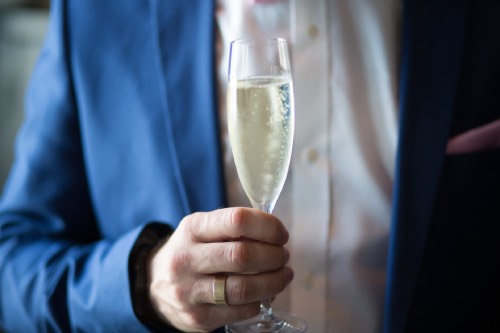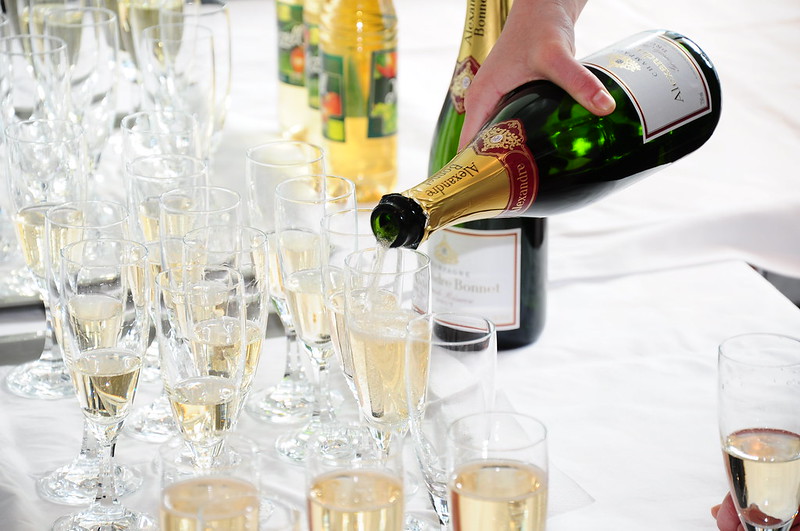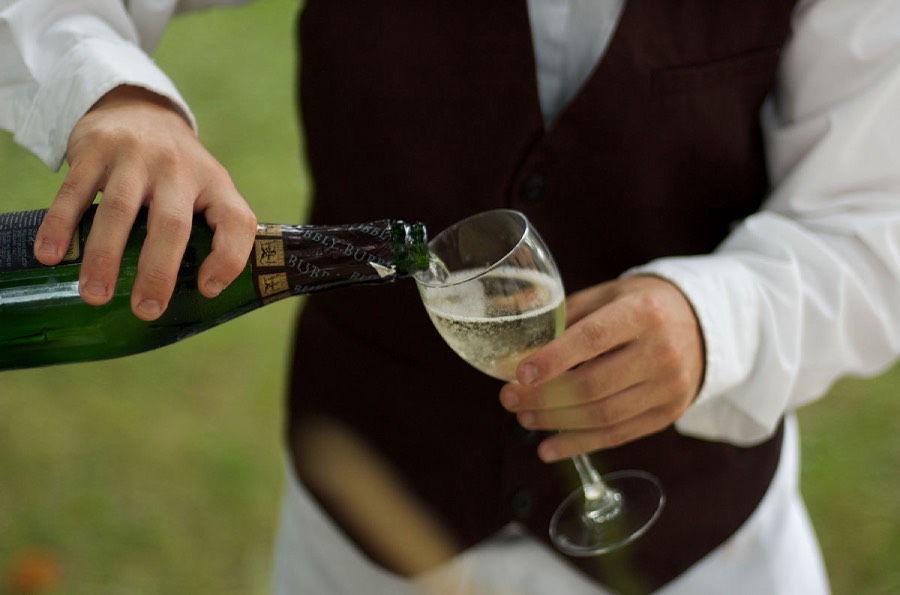Whether you’re planning for a special occasion or simply enjoy the finer things in life, a beautifully chilled bottle of sparkling wine is often the answer. However, as with all wine, the variety of sparkling is incredibly diverse, with particular styles more suited to certain foods and occasions.
Here we unravel a few industry secrets and common misconceptions, providing top tips along the way. Next time you fancy splashing out, you’ll be armed with all the knowledge you need to wow even the most hard-to-please guests, and, of course, put on a show.
Champagne
Where better to start than with the piece de resistance of the sparkling wine world. For centuries, Champagne has been synonymous with luxury. Frequently the centrepiece of the most sophisticated celebrations, the French speciality continues to be the go-to drink of choice for a plethora of events.
Tasting notes
First and foremost, for a wine to be called Champagne, it must be produced from the Champagne region in France, which is loosely north east of Paris. Strict appellation laws control the classifications of Champagne produced in the region itself, with most made with Chardonnay, Pinot Noir and Pinot Meunier grapes. There are then two main methods for creating Champagne – Methode Champenoise and Methode Tradicional – which essentially dictate how long a Champagne is aged for, influencing the flavours and style.
However, when it comes to flavour, the main indicator is whether the Champagne is vintage or non-vintage. Non-vintage Champagne is made with grapes and base wine from different years, whereas vintage Champagne is made from a single year’s harvest of exceptional quality. In terms of flavours, vintage Champagne has deeper more concentrated flavours, with notes of butterscotch, marzipan, baked fruit and citrus freshness. Non-vintage Champagne is generally less complicated and fresher in taste, with crisp apple notes and a strong citrus finish.
Storage and serving
To keep Champagne at its best, store in a cool, dark place out of the way of extreme temperature fluctuations. Here’s a very important rule: avoid the fridge at all costs. This will oxidise it to death and destroy corks. Non-vintage can be stored up to 18 to 24 months, whereas vintage Champagne is designed to age for years, even decades. As with red wine, bottle ageing adds to the complexity and depth of flavours, which is why a real centrepiece Champagne, or the most expensive on a restaurant wine list, will likely be an aged vintage. Serving temperature should always be seven to nine degrees.
Glasses
Whilst saucers and coupe glasses are very in right now, particularly with the wave of Prosecco popularity, flutes are actually far better suited for drinking Champagne. The same really applies for most, if not all, sparkling wines. The height of flutes allow bubbles to travel through the wine, which helps to concentrate the flavours and notes on the nose. Plus, they’re better on the eye – bubbles don’t disappear so quickly, adding to the luxurious feel.
Food to pair
Champagne is a fascinating drink to pair food with and is a match made in heaven for some of the finer delicacies in life. Caviar and oysters are classic high-end pairings – the fullness yet surprisingly light body of Champagne balances perfectly whilst not overpowering. Because of its high acidity, Champagne works brilliantly well cutting through fatty foods.
At the other end of the food spectrum, and if you fancy having a some more down-to-earth luxury of a weekend, try pairing Champagne with fried fish and chips. It’s a match made in heaven. The crispness of Champagne cuts through the fattiness of the batter and fries, whilst not being too intense in flavour to overpower the white fish.

What about Cava?
Cava in recent years has been somewhat of a long lost friend. Suffering a reputation crisis and branded as the cheap alternative to Champagne, the Spanish sparkler has today reinvented itself, introducing the idea of single vineyard tier (found with many high end wines – essentially meaning wine made from one location).
This has helped to raise awareness of premium Cava options, providing something clear to look for on the label as an indication of quality. There’s no denying that Cava is a more accessible drink and therefore doesn’t quite have the wow factor of its fancier French cousin, but that doesn’t mean it can be any less enjoyable for a special occasion, particularly with today’s growing premium market.
Tasting Notes
Cava has more neutral flavours which is why it’s arguably slightly more accessible than Champagne. Notes of stone fruit are pretty consistent with most Cavas, largely due to the fact it has to be produced in Spain where the climate is warmer and fruit notes more developed. Macabeo, Parellada and Xaerllo are common grapes used to make Cava, as well as Chardonnay and Garnacha in smaller quantities.
Storage, Serving and Food to Pair
The same rules apply for Cava as it does Champagne – a cool, dark room for storage and tall flutes for drinking. Service temperature should be seven to nine degrees. Food pairings likewise are very similar, with fried fish working particularly well. We’d recommend serving tapas style calamari or even sushi.
Perfectly Popular Prosecco
Prosecco is the iconic, effervescent Italian wine which is the sparkling of the moment. It’s both a celebratory tipple and, increasingly, a wine for all occasions, such is its appeal and popularity. As with all wines, there are value and premium options, both offering vastly different notes and styles.
The two main styles of Prosecco are Brut and Extra Dry. Interestingly, and if you’re a very dry Champagne drinker, Brut is the one for you as it’s actually the drier of the two. If you fancy trying something different, look out for Frizzante, which literally means semi-sparkling, where the bubbles are less pronounced. Here you’ll get a real idea of the natural Prosecco flavours.
Tasting Notes
On the whole, Prosecco would be described as an off-dry wine, which is why many younger wine drinkers find it so appealing. The added sweetness versus Cava and in particular Champagne prove to be the key component.
Interestingly, no flavours are actually made in the Prosseco winemaking process – it’s all in the flavour of the grape, in this case Glera. Notes are typically light and fresh, with prominent apple and stone fruit, coupled with a price which makes it a popular choice. As with any wines, there are premium Proseccos which are very much worth investing in. Andas with Cava, look for single vineyards editions, as well an increasing amount of organic and natural Prosecco.
Storage, Serving and Food to Pair
Store in a cool, dark room away from fluctuating temperatures. However, when it comes to serving, bar the very cold temperatures, here is where you can experiment.
Prosecco with its relatively uncomplicated flavours can add a certain wow factor to an array of popular cocktails – the very on-trend Aperol Spritz being a perfect example. If you’re a traditionalist, then flutes are the answer for serving, for exactly the same reasons we enjoy Champagne in tall glasses.
However, order a glass of Prosecco in Italy and it’s more likely to be served in a wider, everyday wine glass or tulip glass – wide at the base, but narrow at the top. That’s because the Italians believe that you aren’t getting the full experience when you drink Prosecco, if you can’t smell all the aromas that would become trapped in a flute-shaped glass.
Of course, no wine truly needs rules – whichever sparkling wine is your preference, it can really be enjoyed for any occasion, and in whichever glass you wish.
Written by Tabby Farrar


